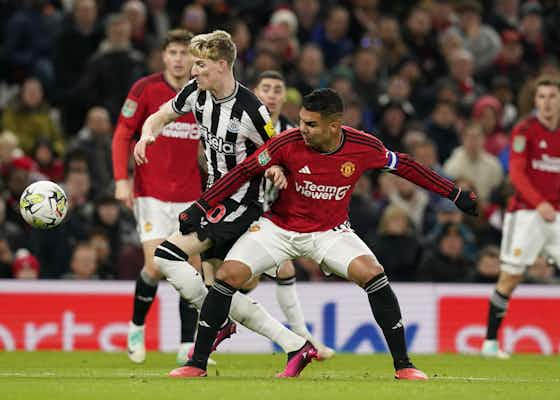EPL Index
·19 February 2024
Casemiro and the Analysis of Ageing Footballers

In partnership with
Yahoo sportsEPL Index
·19 February 2024

In the world of football, the phrase “his legs have gone” is tossed around with a mix of resignation and inevitability, particularly when referencing players north of their 30th birthday. Stuart James, in a compelling piece for the Athletic, delves deep into this narrative, bringing to light the complexities and nuances that underlie this seemingly straightforward judgement. Through a blend of personal anecdotes from players, insights from sports scientists, and data analysis, James’s article challenges the simplicity of the claim and offers a richer, more nuanced perspective on player aging and performance.
The conversation around aging in sports, especially football, often centers on the physical decline, with speed and stamina being the first casualties. Jamie Carragher’s observation about Casemiro and Fabinho losing their edge in crucial duels brings this issue to the forefront. However, as James’s article points out, such assessments can sometimes be premature or overly simplistic. Gareth McAuley’s rebuttal, based on his own experiences and data from his late-career performances, underscores the danger in generalizing about a player’s decline.
One of the article’s key insights is the importance of distinguishing between physical decline and the continued value of experience and game intelligence. As players like Gary Neville and Sol Campbell reflect on their careers, it becomes clear that while physical attributes may wane, the mental and strategic aspects of the game can compensate significantly. The article highlights how players and their coaches adapt to changing physical capabilities, emphasizing tailored training and recovery regimes.

Photo: IMAGO
The modern footballing world is increasingly reliant on data to assess player performance. James’s article introduces us to the work of sports scientists like Chris Barnes, who argue for a more nuanced understanding of player aging, one that accounts for individual variations and the specific demands of different positions. The mention of SkillCorner’s data analysis further enriches this discussion, offering concrete evidence that challenges the notion that older players cannot keep up with the physical demands of top-tier football.
As football continues to evolve, so too does our understanding of player performance and aging. The article suggests that with advancements in sports science and more nuanced data analysis, the narrative around aging players is likely to become more complex and less deterministic. Players like Casemiro and Fabinho, once written off, may find new life in their careers through strategic management of their physical and mental capabilities.
In conclusion, Stuart James’s article in the Athletic offers a compelling critique of the cliché that a footballer’s “legs have gone.” By weaving together personal experiences, scientific insights, and data analysis, James provides a more nuanced understanding of what it means to age in the high-stakes world of professional football. As the game and its analysis become increasingly sophisticated, it’s clear that the conversation around aging and performance is only going to get richer and more interesting.






























































